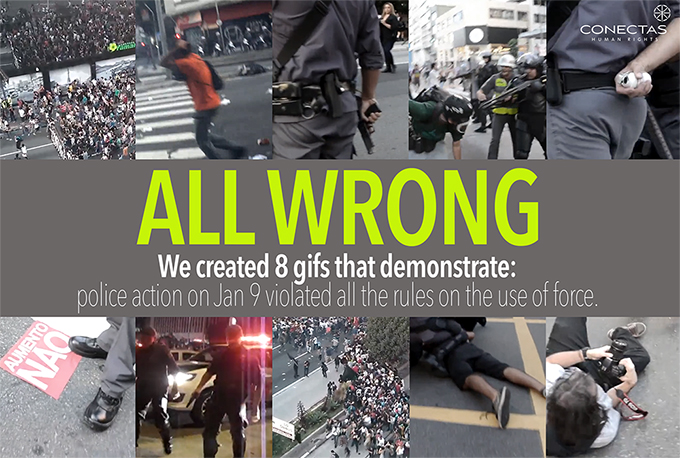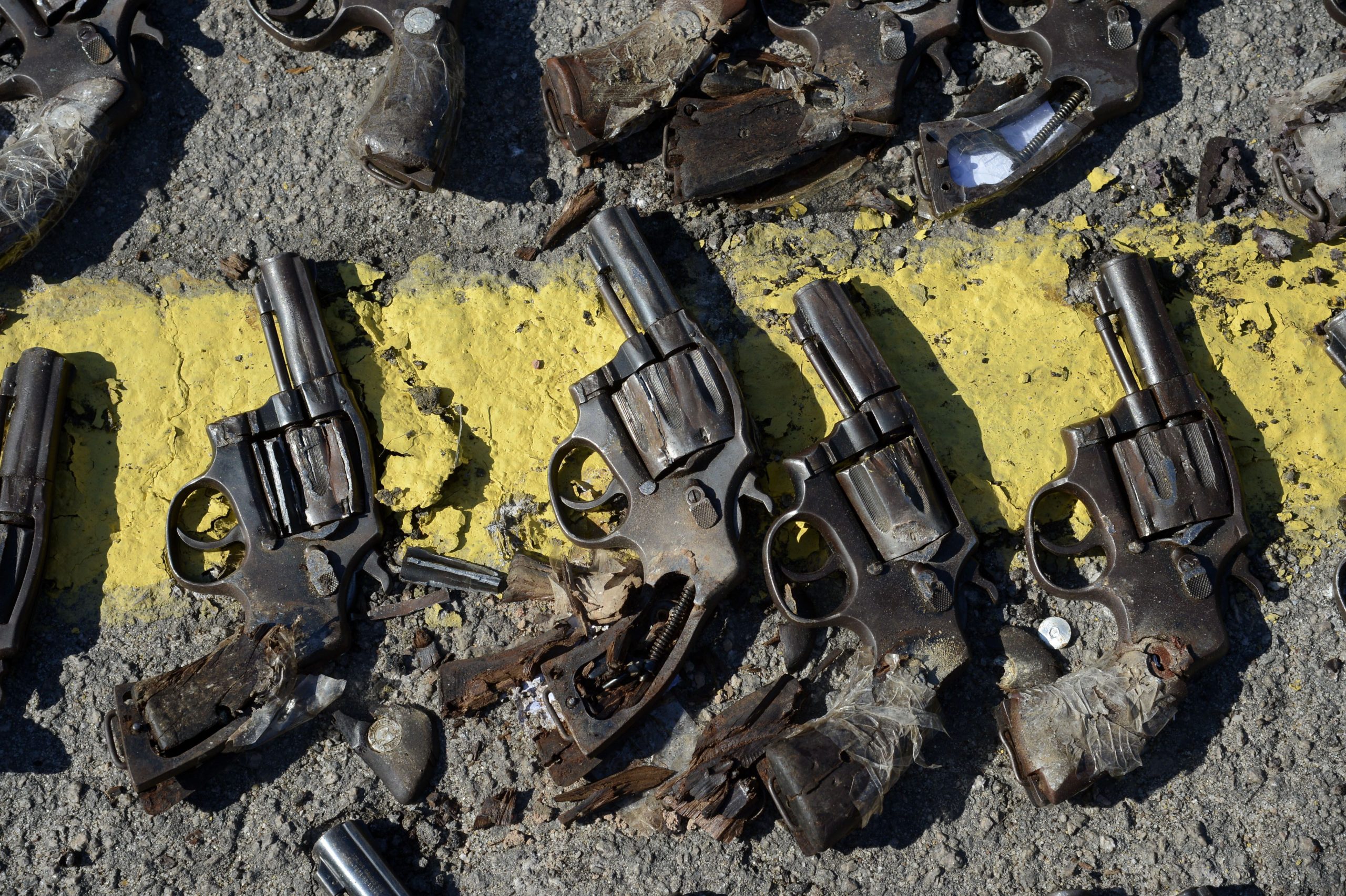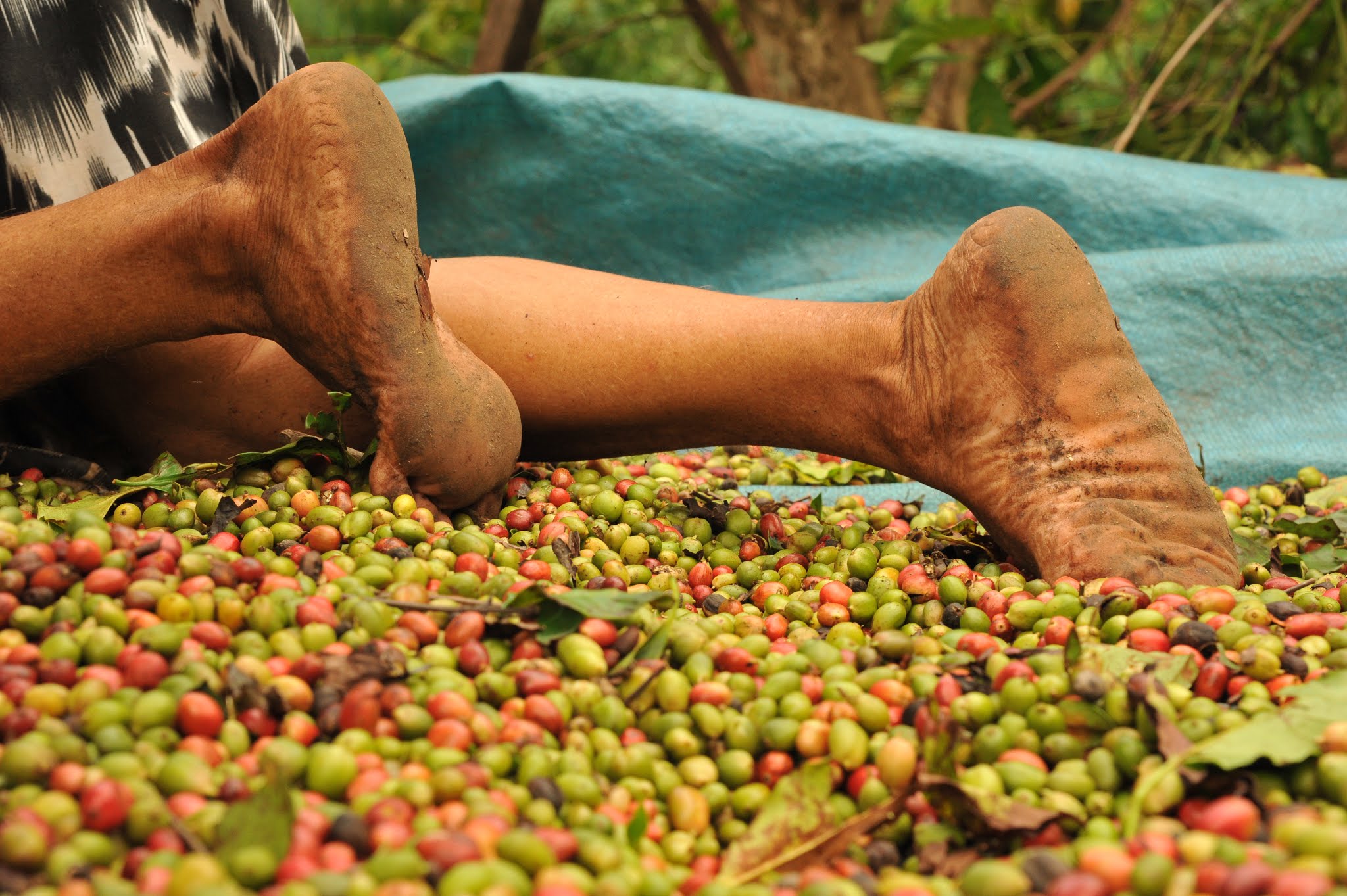Military Police brutality in 8 gifs

Images that appeared on the internet just hours after the protest on January 9, organized by the Free Fare Movement against the increase in public transport fares in São Paulo, are starting to expose the holes in the official explanations for police violence against the demonstrators – who numbered 5,000 according to the Military Police and 30,000 according to the organizers.
Videos, photographs and written accounts demonstrate the series of errors, excesses and abuses committed by the Military Police. Repeating the same infamous techniques used on June 13, 2013, already denounced by human rights NGOs to international bodies, the security forces dispersed the protesters for no apparent reason, assaulted and intimidated demonstrators, made arbitrary arrests, harassed the press and made abusive use of less-lethal weapons.
Excerpts of videos found by Conectas and Article 19 clearly reveal the scale of the violations. The images serve as the basis for a document submitted today by Conectas, Article 19 and the Human Rights Center of the São Paulo Public Defender’s Office to the São Paulo Public Security Department.
- Click here to read the document in full.
In the official letter, the organizations show that the Military Police violated constitutional rules and recommendations of the United Nations and the Inter-American Commission on Human Rights of the OAS (Organization of American States). These same rules had already been detailed in a document sent to the Public Security Department by Conectas and the Public Defender’s Office in August 2013. The widespread non-compliance prompted the Public Defender’s Office to file a public civil action against the state government in April 2014.
How should the police have acted and what did they actually do?
| What the rules say | How the Military Police acted |
Images |
| The Military Police must keep their firearms holstered during demonstrations. |
Several police officers were recorded indiscriminately drawing their weapons. |
 |
| Less-lethal weapons must not be used unless there is a real need. Their use requires a legal order and should respect the limits of proportionality and reasonableness. |
Demonstrators were gratuitously assaulted. Several scenes show the indiscriminate use of rubber bullets, stun grenades and tear gas. |
 |
| The decision to disperse a protest must only be taken in exceptional and extreme situations. These cases require a legal order and must provide clear advance warning, safe routes and enough time for the demonstrators to respond to the warning. |
The march was dispersed arbitrarily, without any prior warning or negotiation. Entire groups were surrounded. The police fired at the backs of demonstrators who were attempting to flee. No safe routes were designated for dispersal and not enough time was given for this to occur safely. |
  |
| No citizen may be prevented from documenting the work of police officers performing public functions. |
Several journalists documenting the demonstration were assaulted by the police or prevented from recording images of detentions and violations. |
 |
| Isolated acts of violence should be handled individually and they should not justify breaking up the whole demonstration. |
The police claimed that the repression was used in response to acts of vandalism. But images show that the demonstration was proceeding smoothly along the agreed route when it was attacked. |
 |
| Police officers must have identification that is clear and visible. |
Several officers who were policing the march did not have identification or refused to show it. |
 |
| The police should act to protect the demonstrators and the right to protest. |
The police intimidated demonstrators and passers-by. |
 |
“The gross violations committed by the Military Police on January 9, documented by Conectas and other human rights organizations, should serve as a warning of a new wave of violence and abuse by the police. Isolated incidents can never justify the dispersal and repression of all the demonstrators,” said Juana Kweitel, director of Conectas. “The police have demonstrated an institutional inability to learn from the mistakes of the past and to listen to civil society, which for a long time now has been denouncing the Public Security Department’s lack of commitment to international norms on the use of force,” she added.
The day before the demonstration, Conectas, Article 19 and the Human Rights Center of the São Paulo Public Defender’s Office condemned the statements made by the commander of the operation, Major Larry de Almeida Saraiva, who threatened to encircle the protest and search passers-by.
International standards
The freedoms of assembly and expression are described in articles 10 and 19 of the Universal Declaration of Human Rights, in the International Covenant on Civil and Political Rights and also in articles 13 and 15 of the American Convention on Human Rights.
There are other international standards that regulate the role of the police at protests, such as the Basic Principles on the Use of Force and Firearms by Law Enforcement Officials, adopted by the UN in 1979, and the reports on Citizen Security and Human Rights (2009) and the Situation of Human Rights Defenders in the Americas (2012), both by the Inter-American Commission on Human Rights.
They all prohibit the use of lethal weapons, establish clear rules for dispersal, reinforce the principles of proportionality and strict necessity, and require the clear identification of each individual police officer.
Sources
See the full versions of the videos used by Conectas:
- 1st Major Protest Against Fare Increase – SP | Comboio
- Protest Against Fare Increase in São Paulo | Molotov Foto Independente
- Free Fare Movement demonstration in São Paulo, 01/09/2015 | Karshh
- 01/15/09 – HAPPY NEW YEAR! SAD SAME OLD CONDUCT. 1st PROTEST AGAINST FARE INCREASE IN SP | Observadores Legais
- 1st Protest by Free Fare Movement in SP Against Fare Increase – Military Police Attack Peaceful Demonstration | Carlos Alberto da Silva – Halmadjin
- Police abuse power in protest against fare increase in SP | Carta Capital
- Police injure and arrest demonstrator in 1st Protest Against Fare Increase in SP | Lutas & lutas tá tendo


